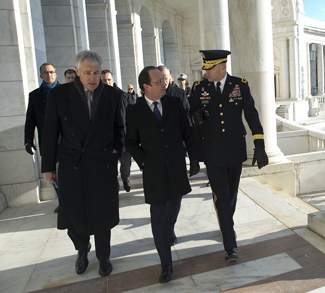Summary
The intensifying conflict in Pakistan’s Swat valley has once again called the security of Pakistan’s nuclear weapons into question. If present instability spills out of Swat and becomes widespread, an American military operation to secure Pakistan’s nuclear assets may be forthcoming, albeit very unlikely to succeed.
Analysis
The current state of Pakistan’s nuclear weapons
Security safeguards at Pakistani nuclear sites have been strengthened twice in the past decade, once after 9/11 and again after details of the AQ Khan proliferation ring surfaced. Improved protocol and facilities are largely the result of an estimated $100 million of targeted American aid and assistance since 9/11. The nuclear devices themselves are stored at four or five different locations within Pakistan. Every nuclear device is stored unassembled and is protected from unauthorized detonation via a biometric Permissive Action Link (PAL). Nuclear stockpiles are guarded by a Pakistani Army detachment of 10,000 soldiers, serving under the command of a two star general.
Unfortunately, all the money and effort invested into securing Pakistan’s nuclear complex could be compromised by a prolonged breakdown of state institutions. Both the late Benazir Bhutto and IAEA Director-General Mohammed El Baradei have remarked in the past that sustained internal chaos risks nuclear devices falling into extremist hands. The presence of sympathetic, extremist elements within the Pakistani Army and ISI potentially circumvents security protocols such as the PALs.
Moreover, a breakdown of command and control could embolden insider attempts to pass on information regarding the locations of nuclear weapons. Insiders could be motivated by politics, religion, or simply personal gain, as the weapons would become an extremely important symbol for any internal faction vying to fill the power vacuum.
The fear of American unilateralism also adds volatility to the situation. The Pakistani government may seek to preclude American intervention by authorizing the transport of nuclear devices to secondary bunkers, thus opening a window of opportunity during transit.
American contingency options
Given the political sensitivity inherent to discussing the invasion of a sovereign state in order to destroy their nuclear arsenal, it is not all too surprising that information regarding American contingency plans is sparse. However, some details are known. Condoleezza Rice confirmed that a contingency plan does exist during her January 2005 senate confirmation hearing. War games simulating an invasion of Pakistan to destroy its nuclear assets were held in Washington sometime in 2006.
Due to the classified nature and sensitivity of the games, the exercise was not officially sponsored by any branch of the U.S. government. Sources who attended the war games later revealed that one of the strategies that was contemplated involved isolating Pakistani nuclear facilities by saturating surrounding areas with powerful anti-tank and anti-personnel mines.
The overall consensus that emerged from the war games was overwhelmingly pessimistic about the prospects of a successful unilateral American campaign. If the American military moved on nuclear sites without the cooperation of the Pakistani Army, a whole range of logistical challenges endanger the operation’s success, least of which being the actual locations of all the nuclear devices. Such a move would also rule out any future cooperation from the Pakistani Army. On the other hand, the prospect of cooperating with the Pakistani authorities is perpetually imperiled by their understandable suspicion of unilateral American action.
American authorities are in the unfavorable position of not only knowing that there are gaps in Pakistani nuclear security, but also that a unilateral military strike would be unlikely to succeed. This present quandary is the reason that American lawmakers are now scrambling to stabilize the Pakistani state through drastically increased non-military aid, thereby attempting a preventative solution before the situation deteriorates past the point of no return.
Zachary Fillingham is a contributor to Geopoliticalmonitor.com



